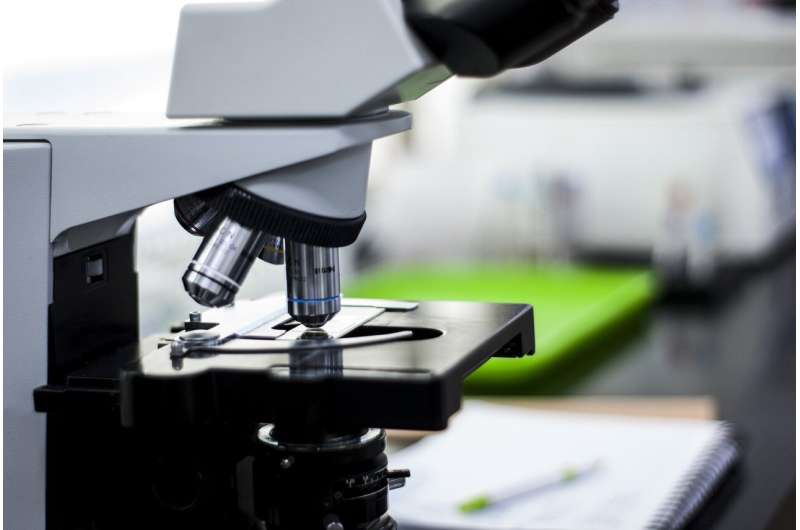Researcher finds special proteins are key when antibiotic resistance spreads

Antibiotic resistance is a growing public health problem globally. The problem is exacerbated by the fact that some bacteria that have become resistant to antibiotics have the ability to spread that resistance to other bacteria via secretion systems. A new from Umeå University analyzes how special proteins are used in this process where antibiotic resistance spreads.
"The results contribute to a deeper understanding of the system for how genetic material is transported from one bacterium to another. This is important for understanding how bacteria can spread, among other things, antibiotic resistance.
"Hopefully, this research can become a small piece of the puzzle in the work to eventually find drugs that can prevent this spread," says Annika Breidenstein, Ph.D. student at the Department of Medical Chemistry and Biophysics at Umeå University.
Modern medicine is based on access to antibiotics that can counteract infectious diseases and enable operations such as transplants and many cancer treatments. Without effective antibiotics, one would often get serious, sometimes life-threatening, infections after surgical procedures.
In recent decades, more and more bacteria have stopped responding to antibiotics; they have become resistant. This is due to the overuse of antibiotics, not only in health care but also in animal husbandry, where healthy animals are given antibiotics to prevent disease in tightly packed environments.
In addition to developing antibiotic resistance, many bacteria can also spread this resistance to other bacteria. This takes place with the help of a protein machinery known as the type IV secretion system.
Breidenstein's thesis focuses on these systems. Since there are many different types of bacteria, the main question was what these different secretion systems have in common and in what ways they differ.
Most of the genetic material of bacteria is packed into a long, circular DNA molecule. However, type IV secretion systems and antibiotic resistance are often found on extra, more mobile DNA called plasmids.
A study from the thesis examines how plasmids are prepared for transport to other bacteria with type IV secretion systems. For this, a protein called relaxase is needed, which binds to the plasmid. X-rays were used to produce a detailed picture of a relaxase that binds DNA. The relaxase binds better to DNA when it is assisted by another protein and it was also investigated how these two proteins interact.
Usually DNA, and thus also plasmids, consists of two strands. However, the relaxase only binds to one of the strands, and it is only this that is transported to the next bacterium. Breidenstein and the research group she is part of suspected that a protein called PrgE is important for this process, as they believed that it binds this particular single-stranded DNA.
Therefore, they also produced images of this protein, which showed exactly how the protein binds to DNA. However, PrgE was found to bind to both single- and double-stranded DNA. The conclusion was that PrgE does not have the expected function and is not directly involved in DNA transport.
The question remained—what do all type IV secretion systems have in common? To answer this, the researchers used new bioinformatics methods that use artificial intelligence. Using a database they created for the purpose, they were able to identify which proteins generally look the same in all known type IV secretion systems.
Using this knowledge and artificial intelligence, a model of what a type IV secretion system could look like was built. With this advancement, it will be possible to better understand the secretion systems that are important in hospital infections.
More information: Thesis:
Provided by Umea University




















